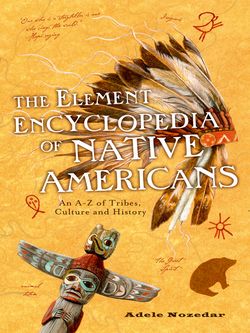Читать книгу The Element Encyclopedia of Native Americans: An A to Z of Tribes, Culture, and History - Adele Nozedar - Страница 24
APACHE
ОглавлениеA tribe from the Northwest, the Apache were renowned for their fearlessness which, combined with a natural ferocity, meant that they were much feared, not only among the white settlers, but by other Natives, against whom were long-running feuds. Since they had been living in New Mexico when the Spaniards had first arrived there with horses, the Apache were one of the first tribes to train, breed, and ride horses after they had captured the animals in raids. It was their horseback raids on the Pueblo settlements of that area that gave them their name: Apachu means “enemy” in the Zuni language, and “fighting men” in the Yuma tongue. Inde, meaning “people,” is the term that the Apachean groups used to refer to themselves. Although the Apache and the Navajo are related, the term “Apache” isn’t used in reference to the Navajo. Both Apache and Navajo are a part of the Athabascan language group.
There were several different bands of tribes that are grouped under the general heading of Apache. These include the Chiricahua, who had the reputation of being the most ferocious of all the Apache groups, the Kiowa Apache (or Plains Apache), the Jicarilla (who cultivated corn as well as hunting buffalo), and the Mescalero (so-named because of their fondness for the roasted heads of the wild mescal plant). The Lipan Apache in Texas were known to be particularly “unruly.” These separate Apache groups didn’t really work in any kind of unity; there were seven different languages between the major groups, as well as diverse cultural differences between those groups.
The Apache were seasonal hunters, ranging after buffalo, deer, and elk. The Apache were matrilinear—that is, the children were deemed to belong to the tribe of their mother and, once married, their father’s obligations lay with their mother’s clan. Although all the separate Apache clans operated distinctly from one another, during times of warfare they banded together to make a formidable fighting force.
As soon as they gained access to firearms as well as horses, the Apache became even more dangerous than before. It’s fair to say that they posed the greatest threat to the Europeans in the desert territories of New Mexico and Arizona. In addition to their warlike ferocity, the Apache were intelligent, wily strategists. One U.S. general, whose identity has been lost, described the Apache as “the tigers of the human species,” although for the Apache themselves their nature was simply one born of the constant struggle to survive, and the guerrilla war tactics that they adopted came completely naturally to them. It was rumored that an Apache warrior could run for 50 miles without stopping.
The relationship between the Apache and the Pueblo people was peaceable enough. The Apache pitched their wickiup shelters on the outskirts of the Pueblo villages as they moved through in pursuit of wild game. However, the coming of the Spanish put an end to this existence. The Spanish slave traders had no compunction in hunting down captives to work in the silver mines of northern Mexico, and the Apache found in the Spanish a rich source of horses, guns, and captives of their own.
When, in 1870, the tribe were told that they had to stay on the reservation that had been allotted them, a particular band, under the leadership of Cochise, simply refused, and caused as much mayhem for the U.S. Government troops as they possibly could. In 1873 the troops had corraled some 3,000 Apaches and forced them onto the reservation. Unsurprisingly in view of such treatment, the Apache chose to continue fighting.
Perhaps the most famous of all Apache leaders was Geronimo, who led the tribe from 1880. However, even Geronimo had to admit defeat at the hands of the U.S. Government in 1886.
